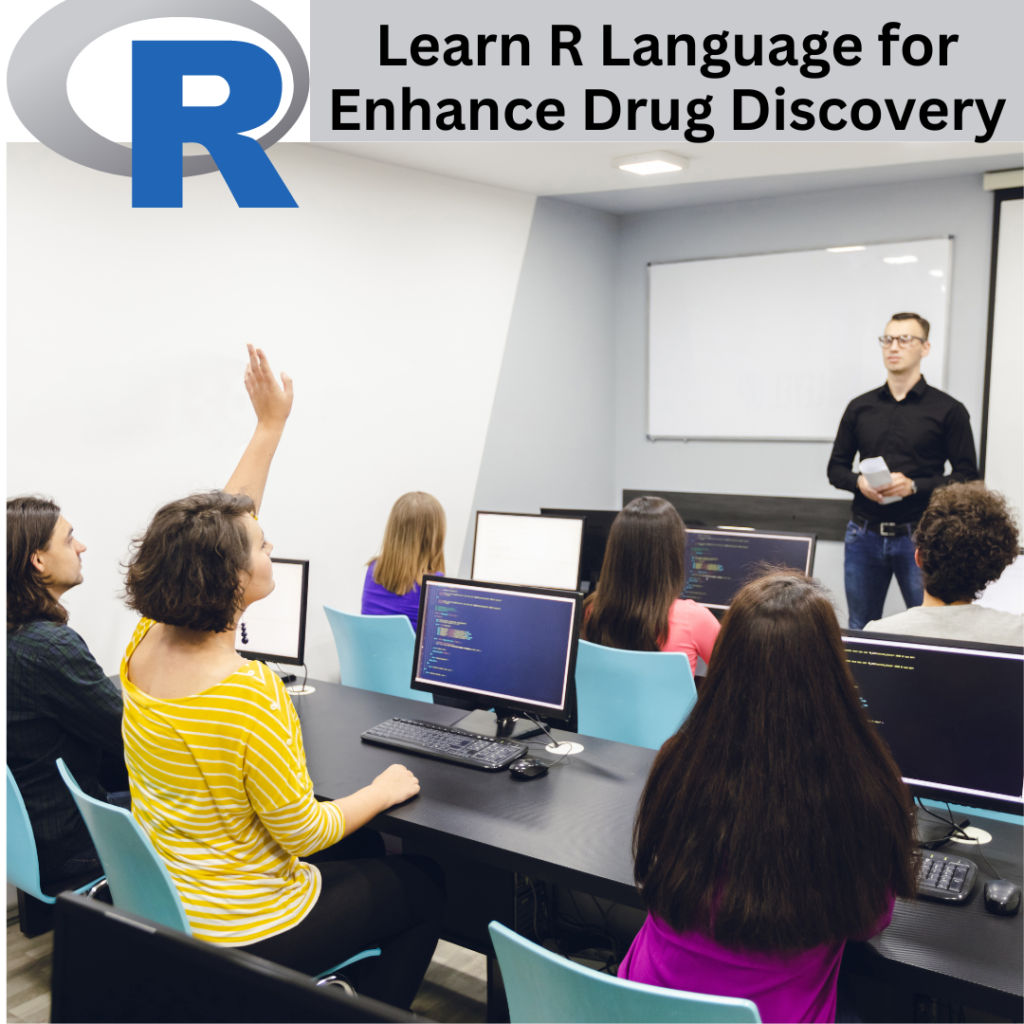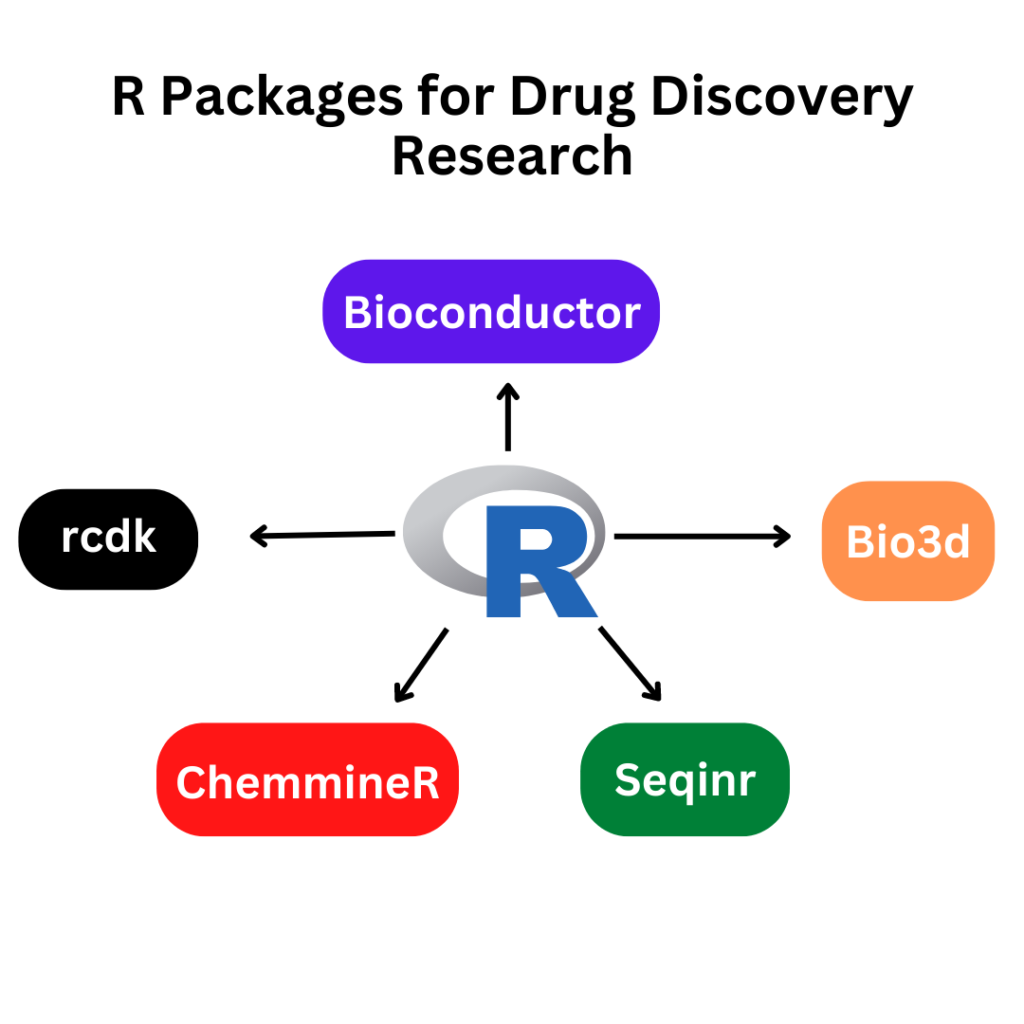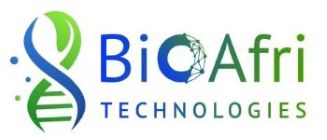Importance of R language
Introduction
R is a powerful programming language that is widely used in the field of data science. In recent years, R has become increasingly popular in the field of drug discovery, due to its ability to handle large amounts of data and its flexibility. It is particularly well suited for handling complex datasets, such as those used in drug discovery. R can be used to process and analyze data from a variety of sources, including clinical trials, experiments, and patient records. R can also be used to create visualizations of data, which can be helpful in identifying patterns and trends. In addition, R is free and open source, making it accessible to a wide range of users. The popularity of R in drug discovery is likely to continue to grow in the coming years, as more researchers recognize its potential for helping to accelerate the pace of research.
What is R language and what are its capabilities in data science
R is a programming language and software environment for statistical computing and graphics. Introduced in 1993, R is widely used by statisticians and data scientists for developing statistical software and data analysis. R is free and open source software, and its code is written in the C, Fortran, and R languages. The R language has a wide range of features that make it suitable for data science.
- R is perfect for studying and modifying data since its syntax is highly expressive and simple to read.
- It contains a wide range of built-in statistical analysis features, including classification, time series analysis, linear and nonlinear regression, and regression analysis.
- Additionally, the graphics features of the R language enable you to plot your data in publications-quality graphics.
- Finally, R can be easily expanded using packages, which provide the language new features.
Consequently, R is a powerful tool for data science that is also easy to use. Whether you’re a experienced programmer or just getting started with data analysis, R is an excellent choice.

The benefits of using R language over other software tools in data science
R is a powerful programming language that is widely used in the field of data science. It also offers many advantages over other software tools, making it an ideal choice for data analysis and statistical modeling.
Again, R is free and open source, meaning that anyone can download and use it without paying any licensing fees. R also has a large community of users, who have created a wide variety of add-on packages that extend its functionality.
It is also designed specifically for statistical computing, and its syntax is easy to learn for those with no prior programming experience.
Finally, R is highly versatile and can be used for tasks such as data visualization, predictive modeling, and machine learning. For these reasons, R is an extremely popular tool among data scientists. As the field of data science continues to grow, it is likely that the use of R will become even more widespread.
How R language is used in drug discovery research
The R programming language is a popular tool for drug discovery research. R’s powerful statistical and data visualization capabilities make it well-suited for analyzing large data sets, and its open source platform allows researchers to share code and collaborate on projects. In recent years, R has been used in a variety of drug discovery applications, including target identification, lead optimization, and toxicology studies. For example, R has been used to develop new methods for predicting drug response, to identify novel targets for therapeutic intervention, and to investigate the mechanisms of action of existing drugs. R’s versatility and flexibility make it an invaluable tool for drug discovery research, and its continued development will no doubt enable even more groundbreaking discoveries in the future.
How R language is used to analyze genomic data for better understanding of drug action
The R language is a powerful tool for analyzing genomic data. By providing a flexible environment for statistical analysis, R allows researchers to explore complex relationships between genes and drugs. For example, R can be used to identify which genes are most affected by a particular drug. This information can then be used to design more targeted therapies with fewer side effects. In addition, R can be used to predict how a new drug will interact with the genes of a particular patient. This information can help doctors choose the most effective treatment for each individual. Thus, the R language is an important tool for understanding the action of drugs at the molecular level and personalized medicine.

The benefits of using R language for data science in the field of drug discovery
R is a powerful open-source programming language that is widely used by data scientists in a variety of fields, including drug discovery. There are many reasons why R is an excellent choice for data science in drug discovery, including the following:
1. R is highly versatile and can be used for a wide range of data analysis tasks.
2. R is free and open-source, meaning that anyone can use it and contribute to its development.
3. R has a large and active community of users, who share code and resources online.
4. R is constantly being updated and improved, with new features being added on a regular basis.
5. R is supported by a wide range of software packages, making it easy to extend its functionality.
In short, R is a powerful tool that can be used to great effect in the field of drug discovery. If you are looking for a data analysis solution that is reliable, adaptable, and supported by a thriving community, then R is the perfect choice.
Comparison of different software tools used in data science for drug discovery research
Different software tools are used for data science in drug discovery research. Some of these software tools are designed for specific tasks, while others provide a more general approach. Some of the most popular software tools used in data science for drug discovery research include R, Python, and Matlab. Each of these software tools has its own strengths and weaknesses. R is a programming language that is specifically designed for statistical computing. It is particularly popular among statisticians and data scientists. Python is a general-purpose programming language that is widely used in many different fields, including data science. Matlab is a matrix-based numerical computing environment that is popular among engineers and scientists. Each of these software tools has its own unique features and capabilities. There is no one best tool for data science in drug discovery research. The best tool to use depends on the specific needs of the project.
Examples of how R has been used to improve drug discovery processes
R is a programming language that has been gaining popularity in recent years for its flexibility and data visualization capabilities. Drug discovery is a complex process that requires the analysis of large amounts of data. As a result, R has been used increasingly often to streamline various drug discovery processes. Here are five examples of how R has been used to improve drug discovery:
1. R was used to develop a novel method for predicting the binding affinity of small molecules to their target proteins. This method was able to accurately predict the binding affinities of known drugs, as well as identify new potential drug candidates.
2. R was used to develop a machine learning algorithm that can predict the therapeutic efficacy of small molecules. This algorithm was able to correctly predict the therapeutic efficacy of known drugs, as well as identify new potential drug candidates.
3. R was used to develop a novel method for evaluating the safety of small molecules. This method helped to identify several new potential drug candidates with an improved safety profile.
4. R was used to develop a novel method for visualizing the structure of proteins. This method allowed researchers to more easily identify key structural features that can be targeted by small molecules.
5. R was used to develop a novel method for analyzing the pharmacokinetic properties of small molecules. This method helped to identify several new potential drug candidates with improved pharmacokinetic properties.

Practical applications of R language in data analysis for drug discovery research
R has become a valuable tool for pharmaceutical companies in the process of drug discovery. Its popularity is due to its flexibility and ability to handle large datasets. Here are five examples of how R has been used to improve drug discovery processes:
1. Identifying drug targets: R can be used to process and analyze publicly available data on genes and proteins. This information can be used to identify potential drug targets.
2. Investigating new therapeutic strategies: R can be used to simulate different therapeutic strategies and analyze their effectiveness. This is particularly useful in the early stages of drug discovery when many options are still being considered.
3. Optimizing clinical trials: R can be used to develop mathematical models that predict how a new drug will behave in humans. These models can help to optimize clinical trials by choose the right dose and patient population.
4. Predicting side effects: R can be used to analyze data from animal studies and clinical trials to predict side effects of new drugs. This is important for safety reasons and to avoid costly delays in drug development.
5. Analyzing real-world data: R is increasingly being used to analyze large datasets from electronic health records and insurance claims. This “real-world” data can provide important insights into the effectiveness of new drugs.
The future of R language in the field of drug discovery research
In recent years, the R programming language has become increasingly popular in the field of drug discovery research. R is a powerful tool for data analysis and visualization, and its flexibility and extensibility make it well-suited for handling the complex data sets often generated in drug discovery studies. Additionally, R is free and open source, making it easily accessible for researchers on a tight budget. As a result, it is no surprise that R is being used more and more often in drug discovery research.
Looking to the future, it is likely that R will continue to play an important role in drug discovery research. The language’s ability to handle complex data sets and its relatively low cost of entry makes it an attractive option for many researchers. Additionally, as more and more pharmaceutical companies adopt open source approaches to drug discovery, R is well-positioned to benefit from this trend. As a result, those involved in drug discovery research would do well to keep abreast of developments in the R programming language.
Conclusion
Data science is a rapidly growing field that is being used in a variety of industries, including drug discovery research. There are a number of different software tools that can be used for data science, and each has its own advantages and disadvantages. One popular tool is R, which is a free and open-source programming language that is widely used for statistical analysis. R is also very user-friendly, making it a good choice for beginners. However, R can be slow to run large datasets, and it doesn’t have all the features of some of the more expensive options. Another tool that is often used for data science is Python, which is a versatile scripting language that can be used for a wide range of tasks.
Python is generally faster than R, but it can be more difficult to learn for beginners. Ultimately, the best software tool for data science will depend on the specific needs of the researcher. The background data used in data processing and analysis can be easily processed using R. In addition to its application in the aforementioned domains, R has found widespread adoption in others, such as bioinformatics, genetics, epidemiology, and the pharmaceutical industry. R is used for monitoring and forecasting the spread of many different diseases. We also utilize it to analyze genetic sequences, pharmacological permutations, and the safety data of various medications. In order to analyze genomic data, the R Bioconductor packages are available.










